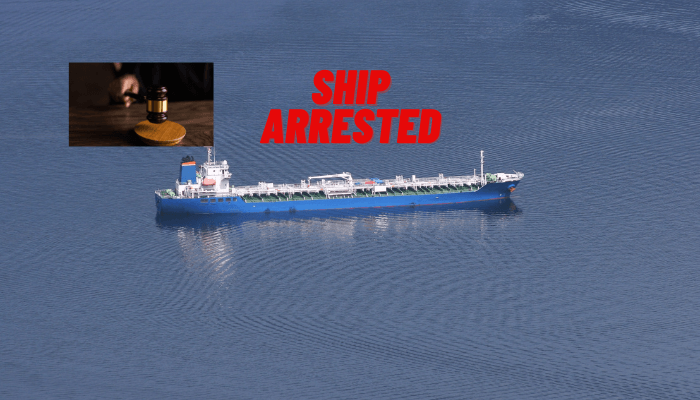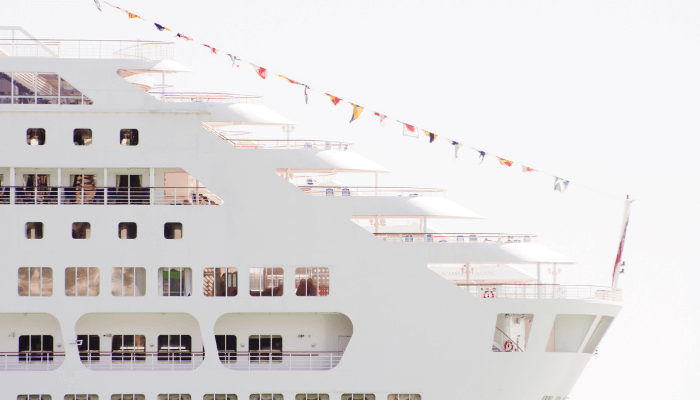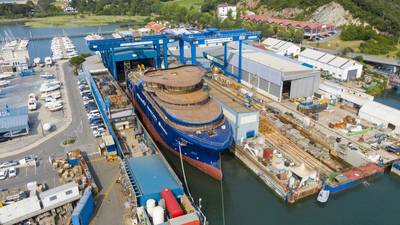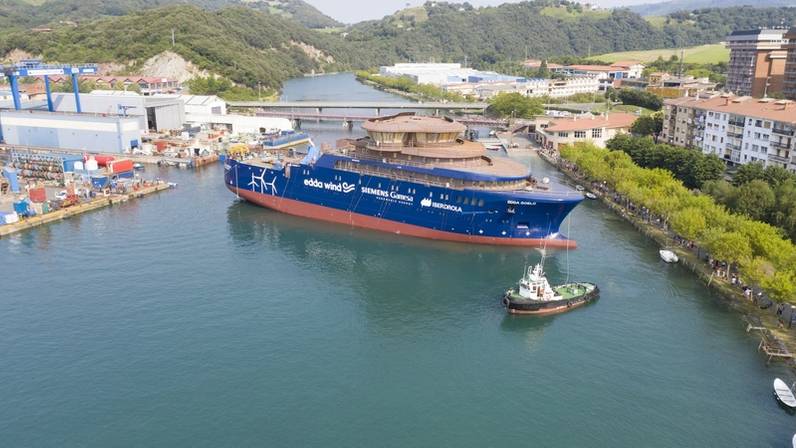The International Maritime Organisation’s (IMO) attempts at curbing the emissions of Shipping have been in the headlines for nearly a decade. Their flagship policy, EEDI (Energy Efficiency Design Index), has laid the way for a host of acronymic additions to its regulatory roster, including EEXI (Energy Efficiency Existing Index), CII (Carbon Intensity Indicator), and SEEMP (Ship Energy Efficiency Management Plan).
The EEXI will be introduced in 2023 and is calculated using a modification of the formula used for EEDI. Unlike EEDI, however, EEXI will apply retrospectively to already existing vessels that may not have been built with sustainability and energy efficiency in mind. VesselsValue data shows that, prior to any efficiency modifications, more than 75% of the fleet (Bulkers, Tankers and Containers) will not be compliant, raising the question: what needs to be done to bring these vessels into line with the regulations?
In this article, we hope to provide some clarity on how existing vessels will need to adapt to be compliant with the IMO’s decarbonisation agenda, and where they fit into VesselsValue.
The way a vessel will change to fit these regulations will depend on the difference between its Attained and Required EEDI/EEXI. In other words, how much does the ‘energy efficiency’ need to improve by?
To properly assess the options available to non compliant ships, this article will break down non compliant vessels into three groupings. These groupings are based on the difference between the attained and required index, as well as the efficacy of technological improvements.
Category 1
The first of these groupings contains vessels that can be made compliant using ESDs (Energy Saving Devices) retrofitted to the main structure.
Category 2
The second category contains vessels for which an EPL (Engine Power Limitation) procedure is the most likely option.
Category 3
The third category includes those vessels that will struggle to remain compliant without drastically reducing speed and fuel consumption and may be the prime candidates for a one way journey to the breaking yard.
Category 1
Category 1 vessels will need to be fitted with energy saving technology to become compliant with IMO regulations. Fortunately, there is a plethora of innovative engineering solutions available to owners looking to improve efficiency, and a combination of these can reduce fuel consumption and improve energy efficiency. ESDs can do this by improving different parts of the ship and altering the EEXI equation in different ways.
One of the most obvious methods of improving a vessel’s EEXI is by reducing the main engine power required to maintain the same speed, commonly achieved by improvements in hydrodynamics and alterations to the propeller.
Propulsion Improving Devices (PIDs)
‘Bolt on’ additions to the ship’s propeller can result in significant reductions in power consumption. These PIDs (Propulsion Improving Devices) affect the flow of water around the propeller blades, creating more favourable local conditions for efficient propulsion. PIDs include ‘pre swirl’ ducts and ‘post swirl’ boss caps.
Other methods of improving propulsion efficiency are based on optimising the vessel’s hydrodynamics.
Hull Air Lubrication System
An effective method of achieving this is the hull air lubrication system, which seeks to reduce friction between a vessel’s hull and the water. To do this, air is injected into the boundary layer between the hull and the water, creating a ‘carpet’ of bubbles that serves to lubricate the hull. This retrofit can result in a reduction of CO2 emissions by up to 10% (Source: Wärtsilä).
Hull air lubrication is restricted to vessels with a flat bottom. An energy saving retrofit available to a wider ranger of vessels, regardless of hull form, is the bulbous bow. This ‘nose job’ adds a protruding bulb to a vessel’s bow, allowing it to break the water more efficiently, and attain higher speeds for the same main engine power. According to GLoMEEP (Global Maritime Energy Efficiency Partnerships), a new bulbous bow can cost a fixed value of USD 100,000 plus material costs ranging from USD 250,000 to USD 700,000, and lead to a reduction in fuel consumption of up to 6%.
All ESDs mentioned so far reduce EEXI by decreasing the engine power required to power the vessel. They operate independently of the external environment and do not rely on external energy sources. There are, of course, many other ways to achieve a reduction in EEXI.
Some of these extra methods reduce the auxiliary engine power used to power the ship’s electronic systems. Solar Panels fall into this category, as do waste heat recovery systems.
Sails
Another alternative method of increasing efficiency is by implementing wind propulsion systems in the form of rotor or kite sails.
These ESDs rely on an entirely sustainable energy source, wind power, and according to the journal Science, can reduce fuel consumption by up to 10%. Rotor sails, also known as Flettner sails, work on the same principle as a pool ball that curls when given side spin.
A ship is a vast structure powered by a large and complex engine, and there are countless opportunities for engineers to optimise and increase efficiency. These few examples serve to show how retrofitted energy saving solutions can reduce EEXI and bring certain vessels into compliance.
Category 2
For category 2 vessels, Energy Saving Devices alone will not change the EEXI value by the desired amount.
These are vessels that require an Engine Power Limitation (EPL), or a ShaPoLi (Shaft Power Limitation). EPL is the general name given to a procedure that limits the maximum engine power achievable by a marine engine. ShaPoLi procedures limit the power transmitted by the shaft to the vessel’s propellers.
Limiting an engine’s maximum power will directly reduce its Maximum Continuous Rating (MCR). MCR is a key component of the EEXI equation, and decreasing the value used in the equation will decrease the outputted EEXI value, making EPL a vital tool in limiting vessel emissions. Alongside the addition of ESDs, vessels can be made more efficient and compliant with EEXI regulation.
EPL can be performed both mechanically and, in the instance of electronically controlled engines, digitally. Mechanical engine power limitations are achieved by making a physical alteration to the engine, whereas digital engine power limitations can be carried out by crew using the ship’s software. Both processes are overridable, and in the event of emergency the limitation can be removed.
A ShaPoLi requires the addition of a control unit and sensors to monitor and limit the power transmitted by the propeller shaft. Like an EPL, it is overridable (Royal Institution of Naval Architects).
An EPL or ShaPoLi will reduce the range of speeds that a vessel can travel at, and most importantly, will likely reduce the ship’s operational speed. This means that less fuel efficient vessels could be forced by the regulation to ‘slow steam’. This is not only a vital consideration for the shipowner, but also for the world cargo fleet, which could experience an overall drop in average operational speed if a significant number of owners decide to implement EPLs/ShaPoLis.
A reduction in speeds will inevitably eat into owners’ profits and competitiveness, and they could quickly find themselves losing business to more efficient vessels unconstrained by slow steaming. If this is the case, questions about the viability of running the vessel will undoubtedly begin to be posed.
So, whilst EPL and ShaPoLi can be the ideal solution for some vessels, they cannot drag the most inefficient vessels into compliance.
When monitoring a fleet, portfolio, or potential acquisition, judging the required cost and work to bring vessels into compliance can be challenging, especially when looking at a large number of vessels every day. This is why VV has built an Energy Power Limitation (EPL) ‘goal seek’ function into its Energy Efficiency product, that allows users to instantly calculate the required power reduction to achieve compliance, with zero data input required.
Category 3
For some vessels, the two options available will be operation outside regulations, emitting CO2 above maximum levels, and demolition. In the former case, vessels would face loss of their International Energy Efficiency Certificate (IEEC), banks may refuse to finance or refinance vessels with design indices above a certain limit, and port authorities may impose penalties on non compliant vessels entering their waters.
If EEDI/EEXI is to be successful in aiding decarbonisation, the threshold at which it becomes unprofitable for a non compliant vessel to operate commercially needs to be set low and in line with the EEXI calculation. It will also require a concerted effort from the key players in the industry to introduce punitive measures.
Wherever this threshold lies now, vessels on the wrong side will most likely find themselves as prime candidates for demolition.
Conclusion
The three methods discussed in this article deal with mitigating the effects of burning fossil fuels. The transition to alternative fuels will be a slow process, as the relationship between Shipping and the oil and gas industry is complex and symbiotic. In order to achieve global decarbonisation targets, switching to alternative fuels is the only sustainable, long term option available.
This transition can be enabled by newbuilds powered by ammonia, bioLNG and hydrogen, however the development of alternative fuel retrofitting technology will also be necessary for a switch that is stable and minimally disruptive.
As the 2023 deadline approaches, access to EEDI/EEXI calculations for an extensive range of cargo vessels is essential to monitor and analyse market fundamentals.
The challenge of decarbonisation will extend to all areas of Shipping, and EEXI alone will present a myriad of challenges to owners, operators and financiers. These players will need to understand the dynamic market by using accurate data and analytics developed by VesselsValue.
For anyone seeking to keep track of this, VesselsValue enables the Energy Efficiency of individual vessels, portfolios and fleets to be accessed easily.
VesselsValue data as of June 2022.
Source: VesselsValue















